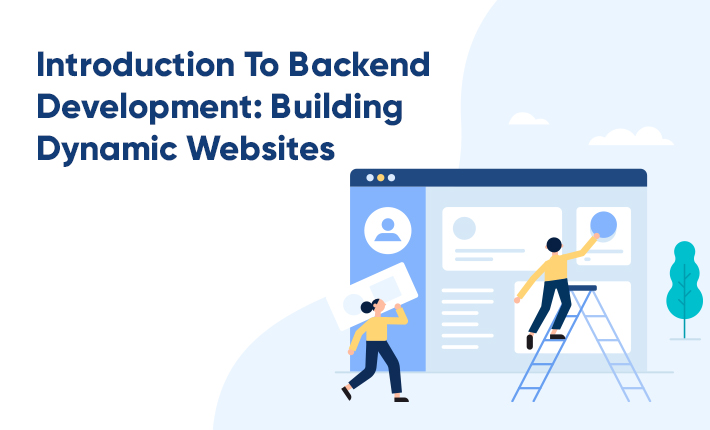Backend development plays a crucial role in building dynamic and interactive websites. It focuses on the server-side of web development, handling data storage, processing user requests, and delivering dynamic content. In this blog post, we will provide an introductory overview of backend development, exploring its core components, technologies, and its role in building dynamic websites. Whether you're a beginner venturing into web development or someone looking to understand the backend better, this guide will equip you with the fundamental knowledge to get started.
I. Understanding Backend Development:
Backend development involves the creation and management of server-side components that power websites. It primarily deals with the logic behind the scenes, processing requests from users, interacting with databases, and generating dynamic content. Backend developers use programming languages like Python, PHP, Ruby, or Node.js to build server-side applications.
II. Server-Side Programming Languages:
Backend development relies on programming languages that facilitate server-side functionality. We'll explore some popular languages, their features, and use cases. Examples include PHP for its widespread use and simplicity, Python for its readability and extensive libraries, Ruby for its elegant syntax, and Node.js for its ability to use JavaScript on the server-side.
III. Databases and Data Management:
Backend development involves managing and interacting with databases to store and retrieve data. We'll discuss relational databases (e.g., MySQL, PostgreSQL) and NoSQL databases (e.g., MongoDB, Redis) and compare their strengths and use cases. We'll also explore techniques like Object-Relational Mapping (ORM) to simplify database interactions.
IV. Server-Side Frameworks:
Backend frameworks provide a structured approach to building web applications. We'll introduce some popular frameworks like Django (Python), Laravel (PHP), Ruby on Rails (Ruby), and Express.js (Node.js). These frameworks provide essential tools, libraries, and patterns to streamline development, handle routing, implement authentication, and connect with databases.
V. APIs and Web Services:
Backend development often involves building APIs (Application Programming Interfaces) and web services to enable communication between different systems. We'll explore RESTful APIs, their architecture, and the role of HTTP methods (GET, POST, PUT, DELETE) in handling data operations. We'll also discuss tools like Postman for API testing and documentation.
VI. Security and Authentication:
Backend developers play a critical role in ensuring the security of web applications. We'll touch upon important concepts like hashing passwords, implementing authentication mechanisms, and protecting against common web vulnerabilities like SQL injection and cross-site scripting (XSS).
VII. Deployment and Scalability:
Deploying a backend application involves configuring servers, managing environments, and ensuring scalability. We'll discuss different hosting options, such as shared hosting, virtual private servers (VPS), cloud platforms (e.g., AWS, Azure), and containerization (e.g., Docker). We'll also touch upon concepts like load balancing and caching to handle increased traffic.
Conclusion:
Backend development is an essential part of building dynamic websites. In this blog post, we provided an introductory overview of backend development, covering its core components, programming languages, databases, frameworks, APIs, security, and deployment. Armed with this knowledge, you can start your journey into backend development, gaining a deeper understanding of how server-side processes interact with the frontend to deliver dynamic and interactive web experiences. As you continue your learning, explore more advanced topics and keep up with the evolving trends in backend development.





Leave a reply